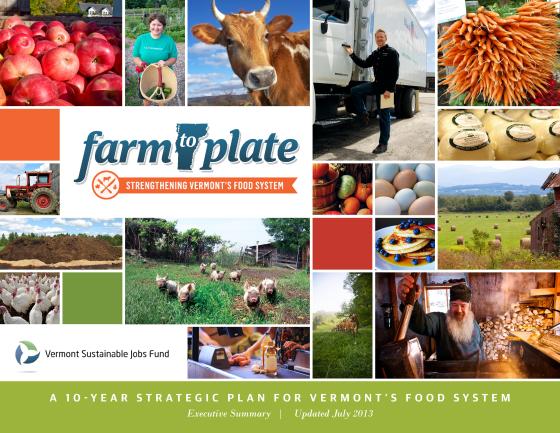
During the 2009 legislative session, two member-based public policy organizations, Vermont Businesses for Social Responsibility and Rural Vermont, and a number of state legislators (including Representatives Chris Bray, Will Stevens, Carolyn Partridge, Shap Smith, Bill Botzow, Martha Heath and Senators Vince Illuzzi, Sara Kittell, Susan Barlett and Peter Shumlin) crafted and helped win legislative approval for the creation of a Farm to Plate Investment Program (F2P). It was approved by the Senate and House in May 2009 and signed by Governor Douglas, as Sec. 35. 10 V.S.A. chapter 15A § 330. The legislation tasked the Vermont Sustainable Jobs Fund (VSJF), in consultation with the Vermont Sustainable Agriculture Council (SAC), with crafting a strategic plan based on a broad scope of work. The primary goals of the legislation were to:
1. Increase economic development in Vermont’s food and farm sector.
2. Create jobs in the food and farm economy.
3. Improve access to healthy local foods.
Building on what former Agency of Agriculture, Food and Markets (VAAFM) Secretary Roger Allbee calls a “renaissance in Vermont agriculture,” VSJF coordinated an 18-month statewide public engagement process to craft a 10-year strategic plan for food system development to achieve these legislated goals. The first F2P Strategic Plan encompasses all types and scales of agricultural-related production and processing, from small-scale diversified production to commodity dairy production, from on-farm processing to commercial scale food manufacturing. The Plan includes four chapters and an appedices, which cover a general overview, goals and indicators, analysis of the food system from farm inputs through the supply chain to consumer demand and nutrient management, and cross-cutting issues that impact the whole food system, including food insecurity, education, workforce development, technical assistance and business planning financing, energy, regulation.
